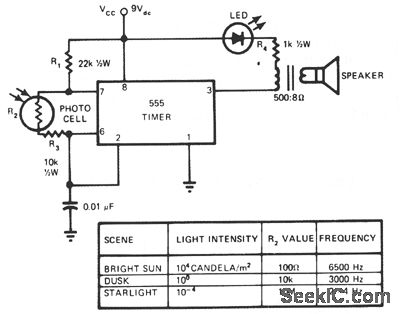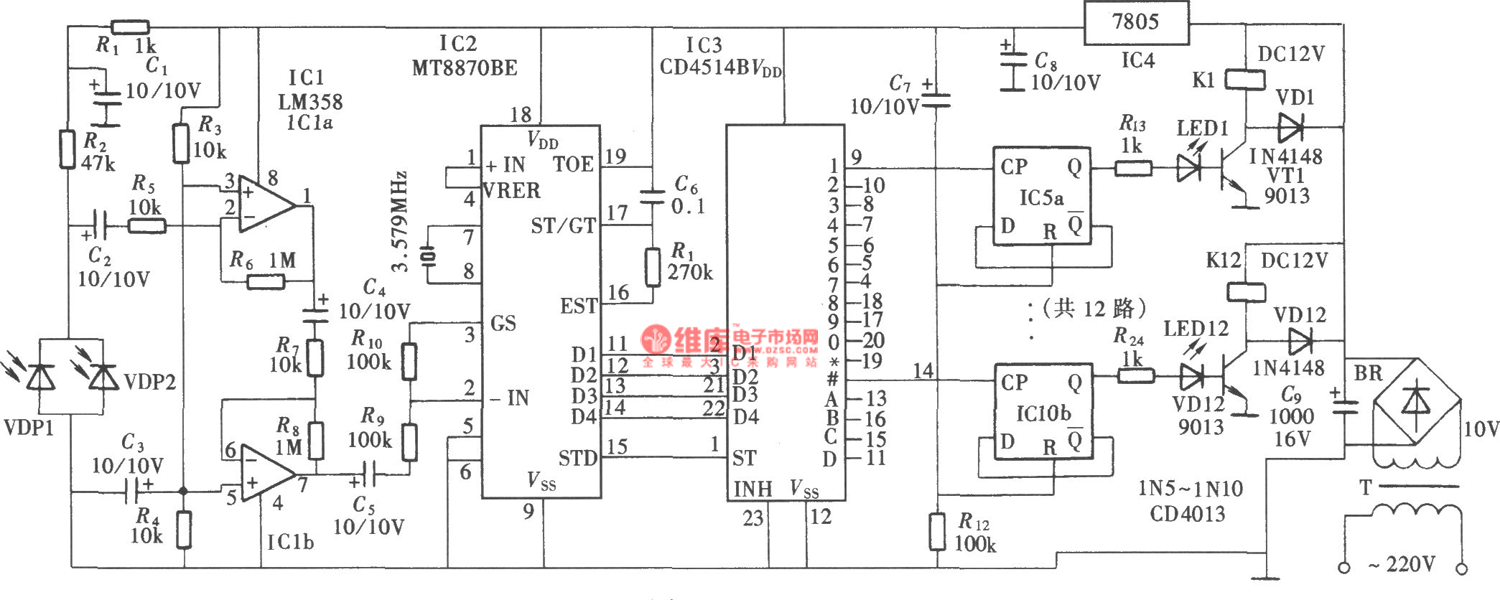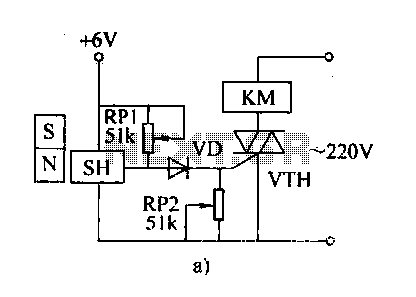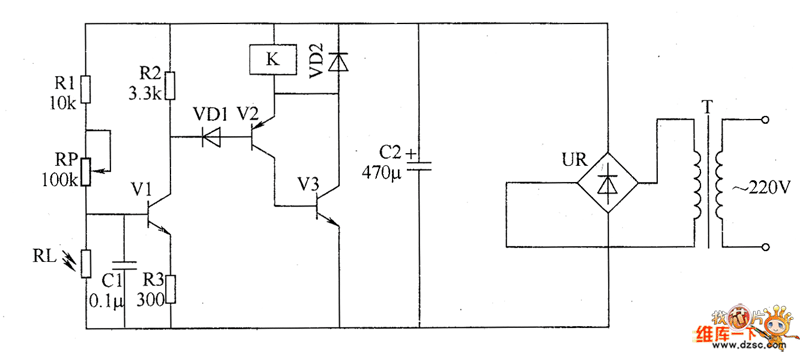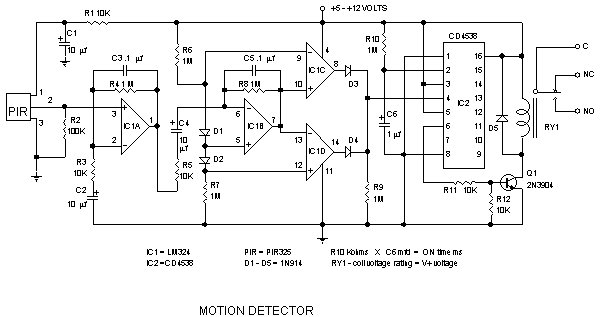
Light detector switch
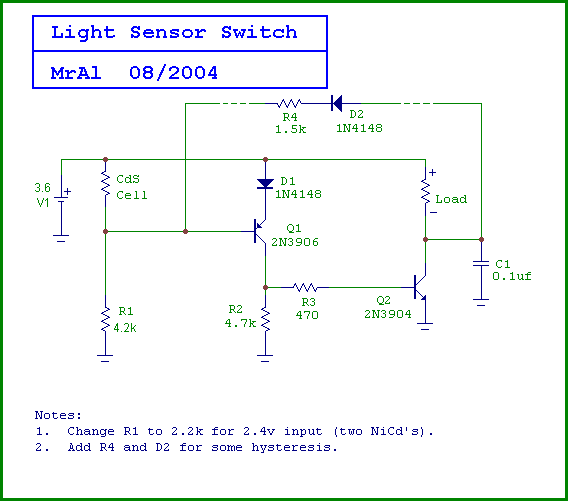
Is there a way to automatically turn on an LED when it gets dark? A version was created using a relay and photoresistor that functioned properly, but concerns arose regarding potential battery drain. The project aims to integrate with a circuit designed for use with only two AA batteries. Some information was found online suggesting the use of a transistor as a switch, but the electronic knowledge is limited to what has been learned in a course.
To create a circuit that automatically turns on an LED in low-light conditions while minimizing battery drain, a more efficient design can be implemented using a photoresistor (LDR), a transistor, and a few passive components. The circuit can be simplified by replacing the relay with a transistor, which will act as a low-power switch.
The circuit design begins with the photoresistor, which changes its resistance based on the ambient light level. In bright conditions, the resistance of the LDR is low, preventing current from flowing to the base of the transistor, thus keeping the LED off. As the light level decreases, the resistance of the LDR increases, allowing a small current to flow through a voltage divider formed by the LDR and a fixed resistor. This current will be sufficient to turn on the transistor.
A common NPN transistor, such as the 2N3904, can be used for this application. The base of the transistor is connected to the junction of the LDR and the fixed resistor, while the emitter is connected to ground. The collector of the transistor is connected to the LED, which is in turn connected to the positive terminal of the battery. A current-limiting resistor should be placed in series with the LED to prevent excessive current from damaging it.
To ensure that the circuit operates efficiently and does not drain the batteries unnecessarily, a low-power transistor should be chosen, and the values of the resistors should be calculated to provide just enough base current to switch the transistor into saturation when the light level falls below a certain threshold. Additionally, a capacitor can be added in parallel with the LED to smoothen the current and provide a slight delay in turning off the LED when the light returns.
This design not only achieves the desired functionality of turning on the LED in darkness but also conserves battery life, making it suitable for applications powered by two AA batteries. Further optimization can be performed by adjusting the resistor values and selecting components that minimize power consumption while maintaining reliable operation.Anyone know how I could make an led come on when it gets dark automatically?I made a version with a relay and photoresistor that worked but then I was think won`t that drain the battery to much?I`m trying to use this in conjunction with a circuit I got from here like the Brinkmann and it uses only 2 aa batteries. I found some info on the web talking about using a transistor as an on and off switch but my only electronic experience is what I have learned from Mr.Als course.So it`s still..
🔗 External reference
To create a circuit that automatically turns on an LED in low-light conditions while minimizing battery drain, a more efficient design can be implemented using a photoresistor (LDR), a transistor, and a few passive components. The circuit can be simplified by replacing the relay with a transistor, which will act as a low-power switch.
The circuit design begins with the photoresistor, which changes its resistance based on the ambient light level. In bright conditions, the resistance of the LDR is low, preventing current from flowing to the base of the transistor, thus keeping the LED off. As the light level decreases, the resistance of the LDR increases, allowing a small current to flow through a voltage divider formed by the LDR and a fixed resistor. This current will be sufficient to turn on the transistor.
A common NPN transistor, such as the 2N3904, can be used for this application. The base of the transistor is connected to the junction of the LDR and the fixed resistor, while the emitter is connected to ground. The collector of the transistor is connected to the LED, which is in turn connected to the positive terminal of the battery. A current-limiting resistor should be placed in series with the LED to prevent excessive current from damaging it.
To ensure that the circuit operates efficiently and does not drain the batteries unnecessarily, a low-power transistor should be chosen, and the values of the resistors should be calculated to provide just enough base current to switch the transistor into saturation when the light level falls below a certain threshold. Additionally, a capacitor can be added in parallel with the LED to smoothen the current and provide a slight delay in turning off the LED when the light returns.
This design not only achieves the desired functionality of turning on the LED in darkness but also conserves battery life, making it suitable for applications powered by two AA batteries. Further optimization can be performed by adjusting the resistor values and selecting components that minimize power consumption while maintaining reliable operation.Anyone know how I could make an led come on when it gets dark automatically?I made a version with a relay and photoresistor that worked but then I was think won`t that drain the battery to much?I`m trying to use this in conjunction with a circuit I got from here like the Brinkmann and it uses only 2 aa batteries. I found some info on the web talking about using a transistor as an on and off switch but my only electronic experience is what I have learned from Mr.Als course.So it`s still..
🔗 External reference
